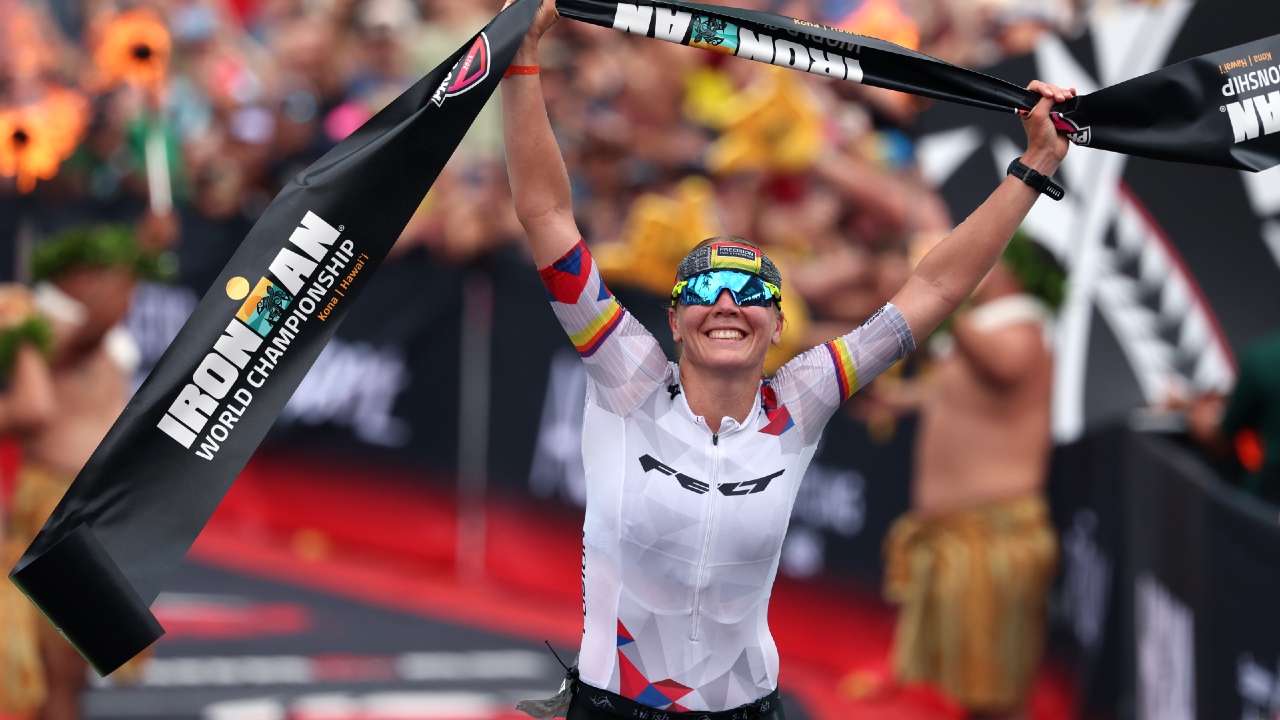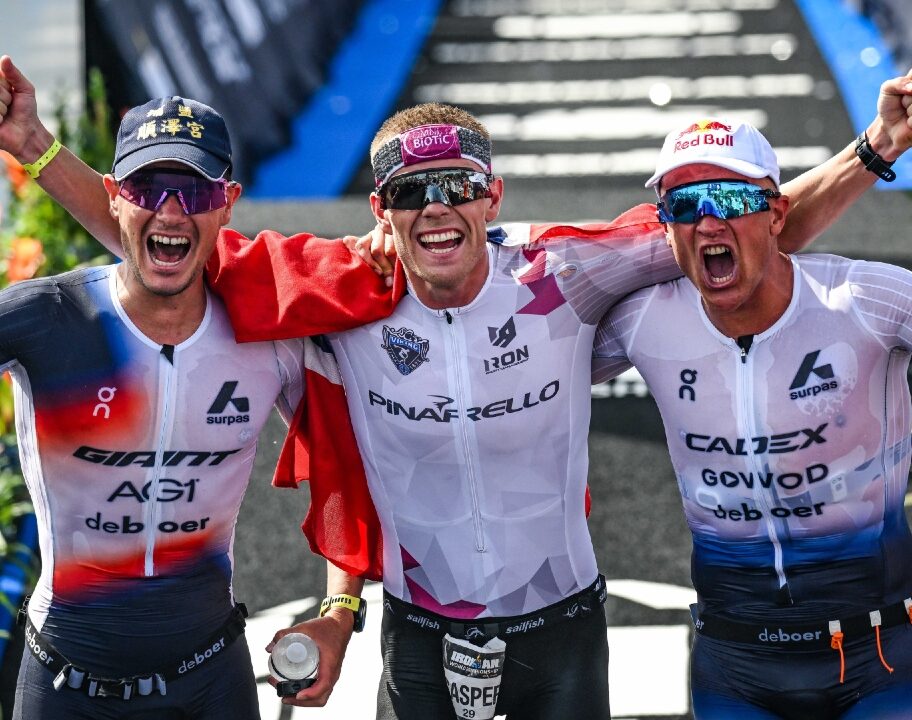Overshoe or over-the-top?
Should you be wearing overshoes on the bike in an Ironman?
Due to their aerodynamic benefits, overshoes are regularly seen being used by cyclists in time-trials, both amateurs and professionals.
However, to date it has been very rare (almost non-existent¹) to spot overshoes being donned on the bike leg of a triathlon.
That could be all about to change. Eagle-eyed viewers may have noticed that Lucy Charles wore Endura overshoes on the bike during her recent gun to tape victory at Ironman South Africa.
"The pain and the pride, and the tears, and the joy, every step of the way." – Jenny Pheiffer.
Lucy Charles #42 is keeping a comfortable and steady pace.#SBIronman #IMAfricaChamps pic.twitter.com/olQIS19feo
— IRONMAN South Africa (@IMSouthAfrica) April 15, 2018
Aerodynamics – are overshoes worth it?
Aero overshoes are designed to reduce the drag created by your bike/tri shoes². Less drag, means more watts to be dedicated to keeping you riding forward as fast as possible.
On the face of it, the main reason not to wear classic aero overshoes is the time it takes to put them on in T1 and off in T2 (possibly with numb/cold hands). This consideration is even more important for pro-triathletes where making it into the pace-line can be make or break for their race.

Interestingly, for an ‘uber’ swimmer like Charles, until there is a swimmer that exits the water close to her, being in a pace-line is not an immediate concern.
What the experts say
Xavier Disley of AeroCoach Ltd UK is an aerodynamics expert that has been supporting and advising some of the fastest cycling time triallists around, including: former National 10-Mile TT winner Richard Bussell, multiple National TT Champion and Commonwealth Games bronze medal winner Hayley Simmonds, and a second Commonwealth Games bronze medal winner in the former rowing superstar turned time-triallist, Hamish Bond.
Overshoes
Disley told me there are clear watt savings from wearing aero overshoes. In fact, although the benefits vary from person to person, wearing aero overshoes could save you 3 to 4 watts and if travelling at 35kph for a 112 mile Iron-distance bike leg. this can equate to 2 to 3 minutes!
Disely advocates a solution to the (potential – see below) time penalty of putting on and taking off overshoes, namely aero calf-guards. AeroCoach in its collaboration with NoPinz offers Tripsockz which can be worn beneath your wetsuit and Disley says they offer comparable aero benefits to overshoes.
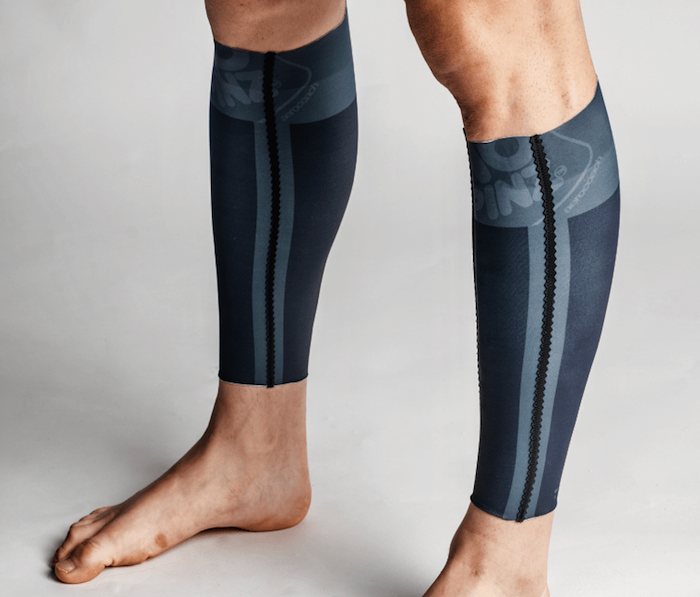
Interestingly, Disley says that your first consideration should be your bike/tri shoes, not overshoes: “What we normally recommend is firstly to try and choose a shoe model that’s aero in the first place to minimise the impact of shoe aerodynamics, but secondly you can use toe covers which are already on the shoe to get some of the benefit without having to stop and put them on [as you might need to for overshoes].”
The combination of toe covers and aero calf-guards might be a good option for those that do not fancy opting for overshoes.
Another option could be aero-socks, such as the NoPinz AeroSockz worn by Phil Graves. Over 70.3 or full distance racing you may prefer riding (and almost definitely running), in socks, however, compared to the overshoe and toe-cover/calf-guard options, putting on socks in T1 is likely to be more difficult (particularly with wet feet) and to take longer meaning you may miss the front group.

Pace-Line
I’ve always been interested to understand the aero benefits of making it into the lead group/pace-line at a mid and long distance triathlon. Disley was very clear that making the pace-line is advantageous, he said: “Being in the pace-line is absolutely a measurable saving, more so when there’s direct headwinds or little winds (compared with crosswinds).”
The different non-draft zones in Ironman-branded events (12m) compared to Challenge (20m) also makes a significant difference.
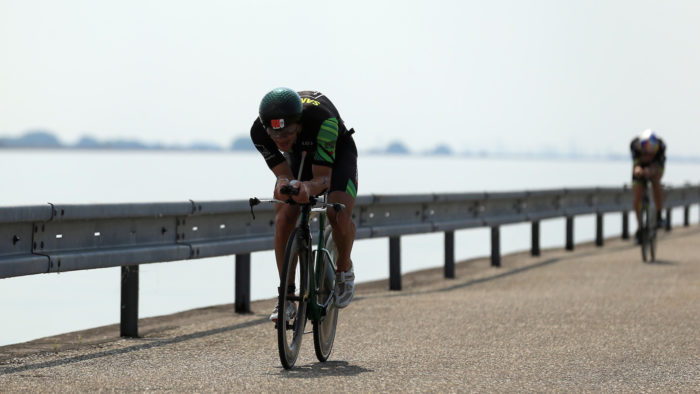
“It’s actually more like 10.5m [in Ironman branded events] as it’s measured off the front wheel, and you can save a good 5% of power at that distance, sometimes a little more so it does pay to sit in as long as that keeps you riding at your target pace or just below, not above! In Challenge 20m rules it’s far less of a benefit (almost nil)…,” said Disley.
What the Pros say
The Scottish brand Endura supports some of Britain’s fasted long-distance triathletes, including sub-8 hour iron-distance finisher Joe Skipper and Ironman world-record holder Tim Don.
I met with the latter at a recent event held by his shoe sponsor On-running and Don revealed that he was in fact planning to be the first triathlete to use the Endura overshoes at Kona 2017.
“I actually designed those for Endura for Kona and I would have been the first person to use them,” said Don.
Don explained his input and the subtleties to the overshoe: ‘”I said to Endura this is what I want. We did one without the zip and in the end we put the zip in. I got the zip to be a bit looser, because I am always looking at ways of going faster.’”
Separately, Joe Skipper is a triathlete renowned for his stellar performances on the bike and he has previously worn overshoes in a triathlon. Skipper told me he might wear overshoes again, but he has some concerns about the time loss/gain from overshoes: “Going ahead I might use them but it would depend on how quickly I could put them on and take them off etc.’” He also made a good point that the temperature and weather conditions may also impact his decision for a race.
Skipper might be interested in Don’s comment below. Don, utilising his ITU swim background, is an athlete that aims to make it into the front group, however he was clear that he wasn’t concerned about any time penalties from putting on and removing the overshoes:
“In my position when you need to be in the lead group, I was able to have them half on my bike [shoe – a bit like a toe warmer] and then you pull it up. I could get them on [and off] while I was moving, so I wasn’t losing anytime at all.”
Interestingly, Katrin McDonald, PR Manager & Marketing Co-ordinator for Endura, told me that the overshoes worn by Charles aren’t tri specific, rather they are road aero overshoes: ‘The aero overshoes aren’t tri specific but the silicone technology which is applied to the upper foot aids in the aerodynamics.” McDonald clarified that at the moment this specific version of overshoe is only available to Endura’s sponsored athletes.
Decision Time
The aero benefits of overshoes appears clear – two to three minutes is a substantial amount of time to save which could mean breaking your PB or qualifying for Kona.
I suppose the real questions are: can you afford them, can you get them on and off quickly, and are there other aero options that may be more advantageous for you?
(¹ Sebastian Kienle (and a few others) previously worn Orca tri-focused aero overshoes. Although, unlike the overshoes worn by Charles they only came up to below the ankle, rather than mid-calf, and did not have a zip.)
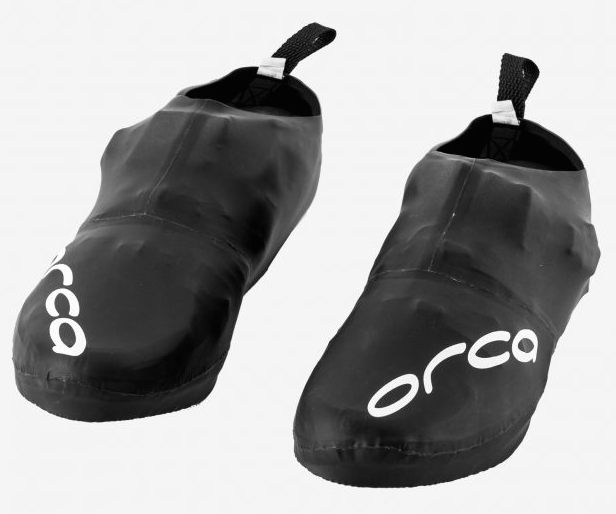
(² It is more complicated than that. Most overshoes are intended to smooth over the surface of the shoe, however the texture and surface of overshoes has developed greatly in recent years to enhance their watt saving properties. Further, depending on the source, there are arguments that it is the volume of the shoe that has a greater impact on aerodynamics (adding an overshoe increases the volume of the shoe). One of the benefits of lace-up bike shoes over dial/BOA/ratchet retention systems is the reduced volume and claimed improved aerodynamics.)







